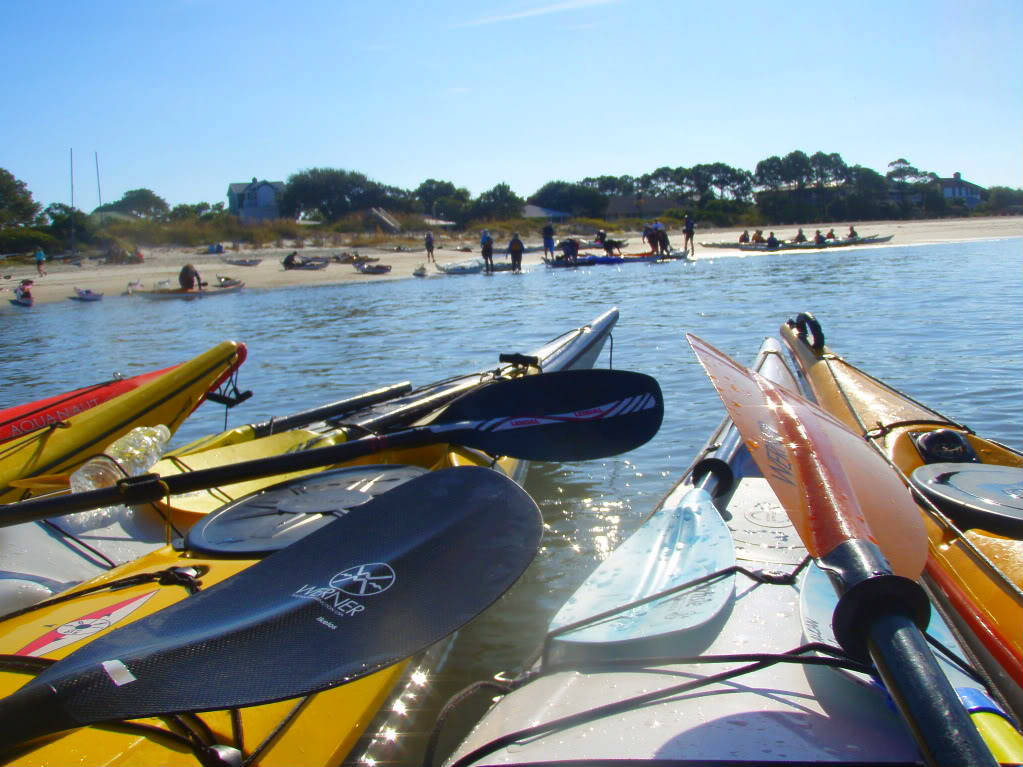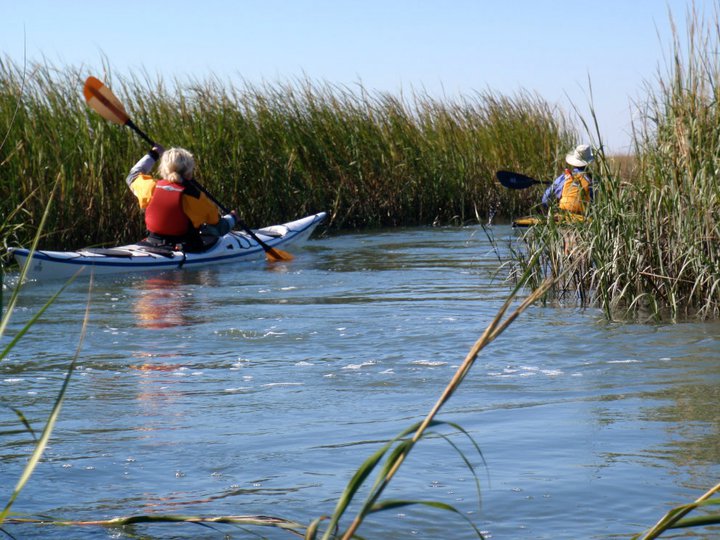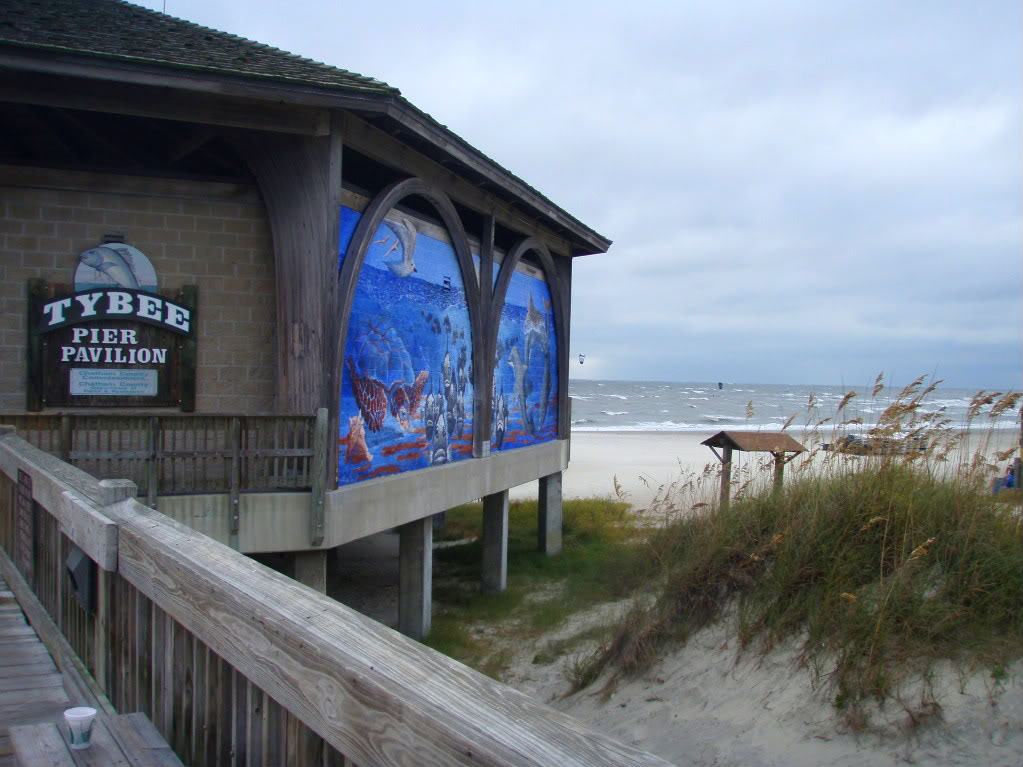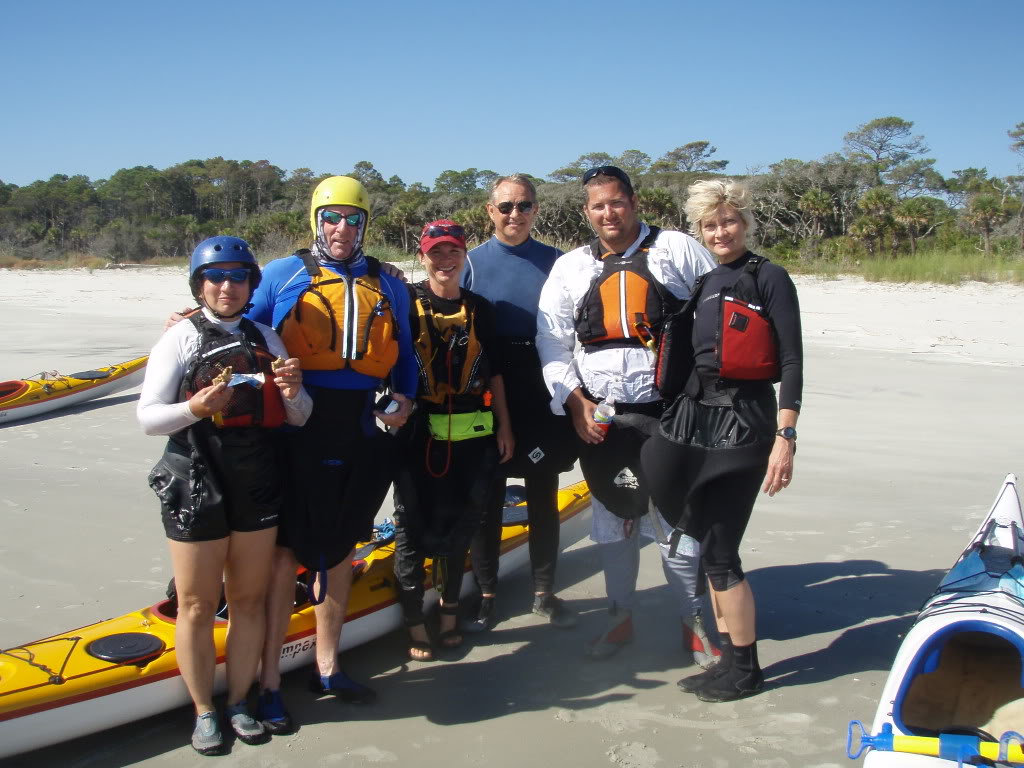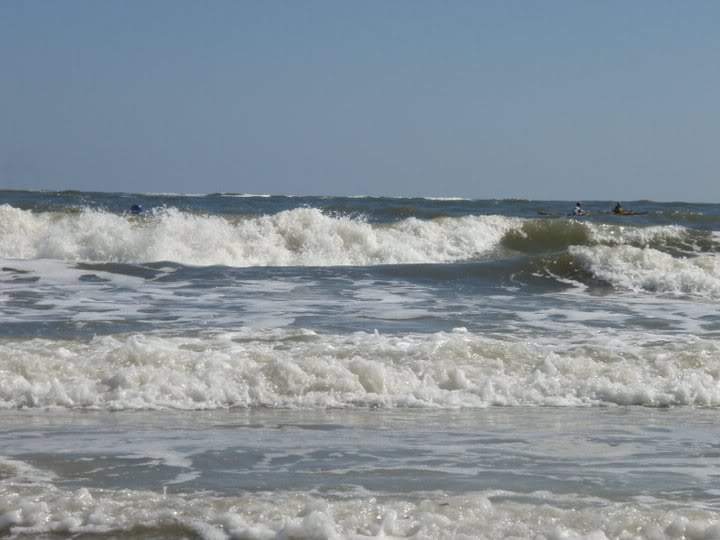By Mary Fairchild
Tybee Island is located about 15 miles east of Savannah, Georgia; at the end of an eight-mile peninsula and US Highway 80. Fourteen barrier islands make up Georgia’s coastline and Tybee is the northeastern-most of these islands. Like all the barrier islands of the area, Tybee has a sandy beach on its eastern shore and a tidal salt marsh on its western shore.
Every 24 hours, the Atlantic coast has two high tides and two low tides. Georgia’s high tidal variance is preceded only by Northern Maine. The world’s biggest tides are in the Bay of Fundy which rises 45 feet. (2)
Without the pushing tides, Georgia’s marshes would disappear. My group only had about an hour before the tide was to be going out. If we took too long we could have gotten stuck in the mud.
The size of the sandy beach at the southern tip of Tybee Island varies considerably in response to tidal changes. Located between Tybee and Little Tybee Island, is the local ebb tidal delta. High tide is more favorable for surfing. Low tide can yield flat conditions, whereas high tide can produce shoulder-high or better surf on the same day. The optimum time to catch surf is 2 hours before high tide and about 1 hour after.
October 27th through the 31st of 2010 was the 9th annual symposium for Sea Kayak Georgia . SKG is owned and operated by Marsha Henson and Ronnie Kemp. The cost for the symposium week included five days of training and participants could choose whether to complete the whole week or attend a la carte each day. They also could decide whether or not to work on skills training courses or BCU courses or a little of both.
I camped out under the stars comfortably with my fly off for the whole weekend. The following week I did wear my drysuit on a couple of mornings, however, as the temperatures dipped down in the 40s for a few nights. One thing for sure, the water was always nice and warm. Although I did spend one day on the beach in my swimsuit, for kayaking, I was wearing neoprene and layers. Even on some of the warmer days the wind swirling around can be chilling especially if you are wet and you don’t have some kind of dry top.
My schedule allowed for me to try two a la carte surf courses at the symposium. I really appreciated the energy and enthusiasm of my first coach, Eila(pronounced Ila) Wilkinson. I wish I had come sooner so I could have heard her talk earlier in the week.
Many of the students in my class had whitewater backgrounds and were unfamiliar with the surf. That’s Brad in the white–he was Eila’s assistant. Not only does he live in the area, but he also works for Sea Kayak Georgia. Eila Wilkensen and Sonja Ewen, along with Nigel Dennis of Sea Kayaking UK are working with the Outdoor Partnership to bring Kayaking into primary schools on the Isle of Anglesey. Eila did a presentation Wednesday night on her circumnavigation of Ireland.
That’s my blue helmet top left. As we paddled parallel to the waves we edged into each wave as it came—the larger the wave the more we edged into it. A kayak is more stable if you are actively paddling it—you have the support of the paddle in the water. We circled and took turns bracing and leaning into the oncoming waves. In the low brace position as you put some weight on your paddle you will get some support as it drags on the back of the wave. In still water you cannot lean this way, but because the wave is pushing you sideways, the paddle acts like a water-ski and you can put a lot of weight on it.
As the wave passes under your boat, ease off the brace, straighten up the boat and resume paddling. The waves want to push you to the beach, but instead of paddling forward with the wave, stop yourself on the wave with backwards strokes and the wave will slip out from underneath you.
- If you back-paddle as waves lift the back of your boat, they slip right under you.
- Sitting up straight when you back paddle slows the boat so the waves slip by you faster.
- If you paddle forward as the waves come, you can ride them.
- Leaning forward when you’re on the wave speeds the boat for a better ride.
- Use a stern-rudder for directional control and support.
On Sunday, I had Intermediate Surf with Tom Bergh and Dale Williams. Tom Bergh founded Maine Island Kayak Company in 1986. He is a Master Maine Sea Kayak Guide, Member of Professional Maine Guides Assn, MASKGI, BCU Coach 4, A4, ACA Open Water. Dale Williams is an ACA Advanced Open Water Coastal Kayak ITE and former BCU Coach Five Aspirant Sea. He is also the current owner of The Outdoor Inn on Tybee Island and founder of Sea Kayak Georgia which is now run by Marsha Henson and Ronnie Kemp.
Surfing: facing the shore, position your kayak 90 degrees to the direction of the waves. Then, to catch one…
- Paddle strongly as it lifts the back of the boat.
- Leaning forward helps the boat accelerate to stay on the wave.
- Use a stern rudder for some directional control and support.
This should schuss you nicely forward. If you end up broaching, the wave will slue you sideways. When you’re on a wave, the water under the back of your boat is moving faster than the water under the bow of your boat. Unless the push from behind is dead straight, the boat will slue to one side or the other.
If you imagine a clock face, with your bow as “12”—as long as your bow is between 11 o’clock and 1 o’clock you’ll stay on the wave. But the moment that your bow veers past 11 or 1, your stern rudder won’t keep you straight on the wave. You have only a few seconds to do the following:
- Get off your stern rudder.
- Let the boat turn side-to the wave.
- Edge into the wave and go into a low brace.
This is the exact move you used when waves were shoving you sideways. As the wave passes, straighten up and use sweep strokes to turn back on course.
Prior to this fall, I had only encountered occasional surf on the Great Lakes on my yearly expeditions. Prior to this trip, I did not have a kayak to surf in. We’ll see what evolves in the months to come–I have to admit, I’ve always liked the rough water and Tybee has been a great introduction for me.
Works Cited & Related
- Barotropic Tides in the South Atlantic Bight
- Sherpa Guides; Natural Processes of the Georgia Coast
- Wikipedia: Tybee Island

